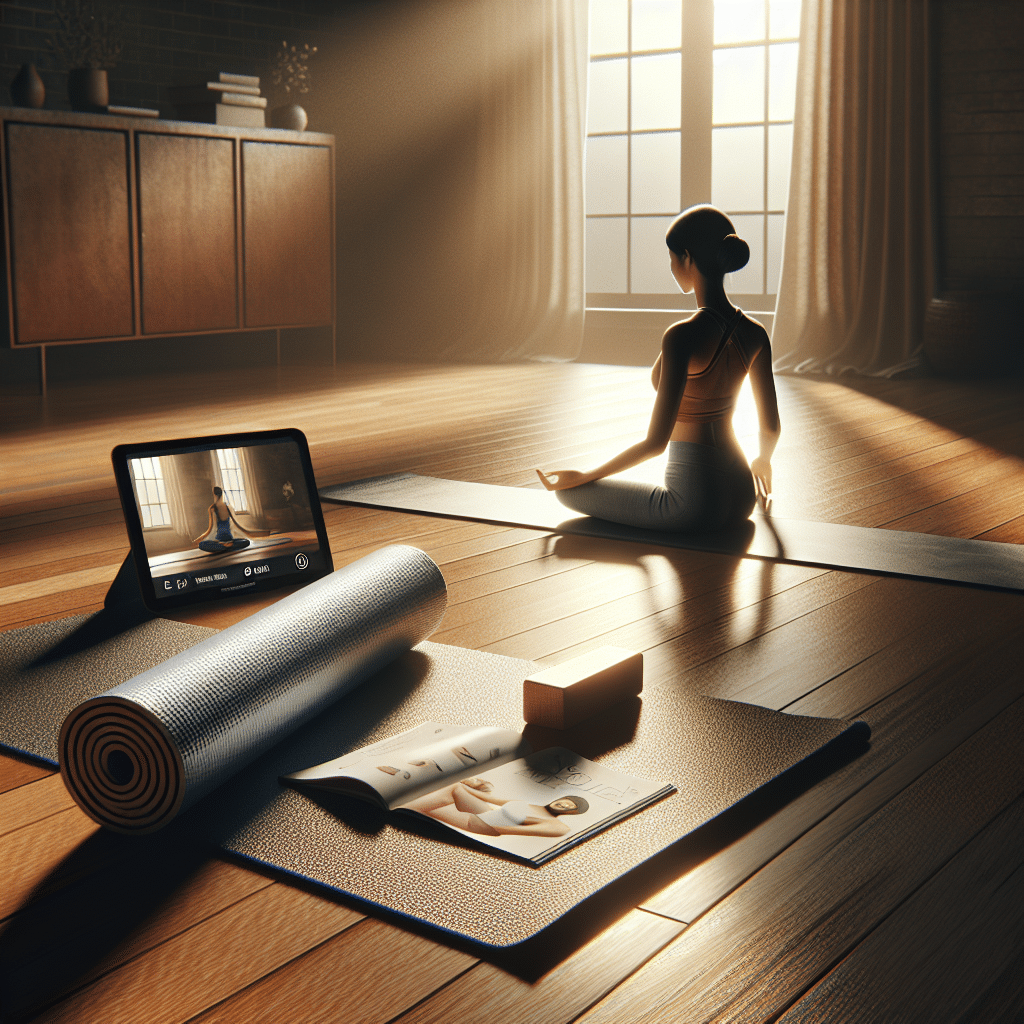Beginner-Friendly Home Yoga Routines: A Comprehensive Guide
Understanding Yoga
Yoga is a holistic practice that intertwines physical postures (asanas), breath control (pranayama), and meditation. It promotes physical health, mental clarity, and emotional stability. Whether you seek flexibility, stress relief, or personal growth, yoga can serve as a gentle introduction to mindfulness and physical fitness.
Benefits of Practicing Yoga at Home
Practicing yoga at home offers numerous advantages:
- Convenience: You can practice anytime that suits your schedule.
- Comfort: Being in a familiar environment allows for a more relaxed experience.
- Cost-effectiveness: With no class fees required, you can save money while accessing various online resources.
- Personalization: You can tailor your routine to focus on specific areas of improvement.
Essential Equipment for Beginners
To create an effective yoga practice at home, a few basic items can enhance your experience:
- Yoga Mat: For traction and cushioning, invest in a quality yoga mat.
- Blocks: These can help modify poses and provide support.
- Strap: A yoga strap aids in reaching and holding poses.
- Blanket: Helpful for comfort in seated positions and restorative poses.
- Cushion: For meditation and seated practices.
Key Principles for a Successful Home Practice
- Set a Regular Schedule: Consistency is vital in building a routine. Choose specific days and times to practice each week.
- Create a Dedicated Space: Designate a tranquil area in your home for your yoga practice.
- Listen to Your Body: Always prioritize your body’s signals and avoid pushing past your limits.
- Start Slow: As a beginner, focus on mastering a few key poses rather than rushing to learn complex sequences.
Beginner Yoga Routines
1. Morning Yoga Wake-Up Sequence (15-20 minutes)
- Cat-Cow Pose (Marjaryasana-Bitilasana): Start on all fours, alternate arching and rounding your back while syncing your breath to movement.
- Downward-Facing Dog (Adho Mukha Svanasana): Transition into an upside-down V-shape. Pedal your feet to stretch your hamstrings.
- Standing Forward Bend (Uttanasana): Walk your feet to your hands, allowing your upper body to hang heavy.
- Mountain Pose (Tadasana): Stand tall, grounding your feet and reaching your arms overhead. Focus on deep breathing.
- Cobra Pose (Bhujangasana): Lie on your stomach, place hands under shoulders, and gently lift your chest for a heart-opening stretch.
- Child’s Pose (Balasana): Finish with this resting pose, allowing your body to relax as you breathe deeply.
2. Lunchtime Energy Boost (20-25 minutes)
- Chair Pose (Utkatasana): Stand with feet together, bend your knees, and lower your body as if sitting back onto a chair.
- Warrior I (Virabhadrasana I): Step back into a lunge, raising arms overhead; focus on your front knee.
- Warrior II (Virabhadrasana II): Open your hips and shoulders to face side, stretch arms parallel to the floor.
- Triangle Pose (Trikonasana): Step your feet wide apart, reach forward, and lower one hand to your shin while lifting the other arm.
- Seated Forward Bend (Paschimottanasana): Sit with legs extended, hinge at your hips, and fold forward, stretching your spine and hamstrings.
3. Evening Relaxation Routine (20-30 minutes)
- Legs-Up-The-Wall Pose (Viparita Karani): Lie on your back, scoot close to a wall, and extend your legs upward. Stay here for several breaths.
- Reclining Bound Angle Pose (Supta Baddha Konasana): Lie on your back, bring the soles of your feet together, and let your knees fall open.
- Seated Spinal Twist (Ardha Matsyendrasana): Sit cross-legged, rotate your torso to one side, using your opposite hand for support.
- Shoulder Bridge (Setu Bandhasana): Lie on your back, bend your knees, and lift your hips towards the ceiling.
- Corpse Pose (Savasana): End your session lying flat, focusing on your breath, allowing your body and mind to relax completely.
Breath Techniques to Incorporate
- Diaphragmatic Breathing: Place a hand on your belly, inhale deeply through your nose, and feel your belly expand.
- Ujjayi Breath: Inhale and exhale deeply through your nose while slightly constricting the back of your throat, creating a soft ocean-like sound.
Resources for Learning and Inspiration
- YouTube Channels: Explore channels like Yoga With Adriene, Sarah Beth Yoga, or Fightmaster Yoga for free, beginner-friendly classes.
- Mobile Apps: Apps such as Down Dog and Yoga Studio can guide you through various routines and offer customizable settings.
- Online Courses: Websites like Glo, Gaia, and Daily Burn provide structured courses for beginners that you can follow at your own pace.
Maintaining a Positive Mindset
As you embark on your home yoga journey, remember that every practice is unique. Celebrate your progress, whether it’s mastering a new pose or simply being consistent with your practice. It’s essential to cultivate self-compassion and patience with yourself throughout this experience.
Tips for Staying Engaged
- Track Your Progress: Keep a journal of your yoga journey, noting your physical and emotional changes.
- Join Online Communities: Engage with fellow practitioners through social media or forums to share experiences and insights.
- Experiment with Styles: Try different styles of yoga, such as Hatha, Vinyasa, or Yin, to find what resonates with you.
Final Reminders
Remember, yoga is a personal journey. It’s about finding balance and connection within yourself. Approach each practice with an open heart and a willingness to learn, and you’ll find deep fulfillment in your home yoga routines. Embrace the journey and enjoy the beautiful transformation that comes from consistent practice.
